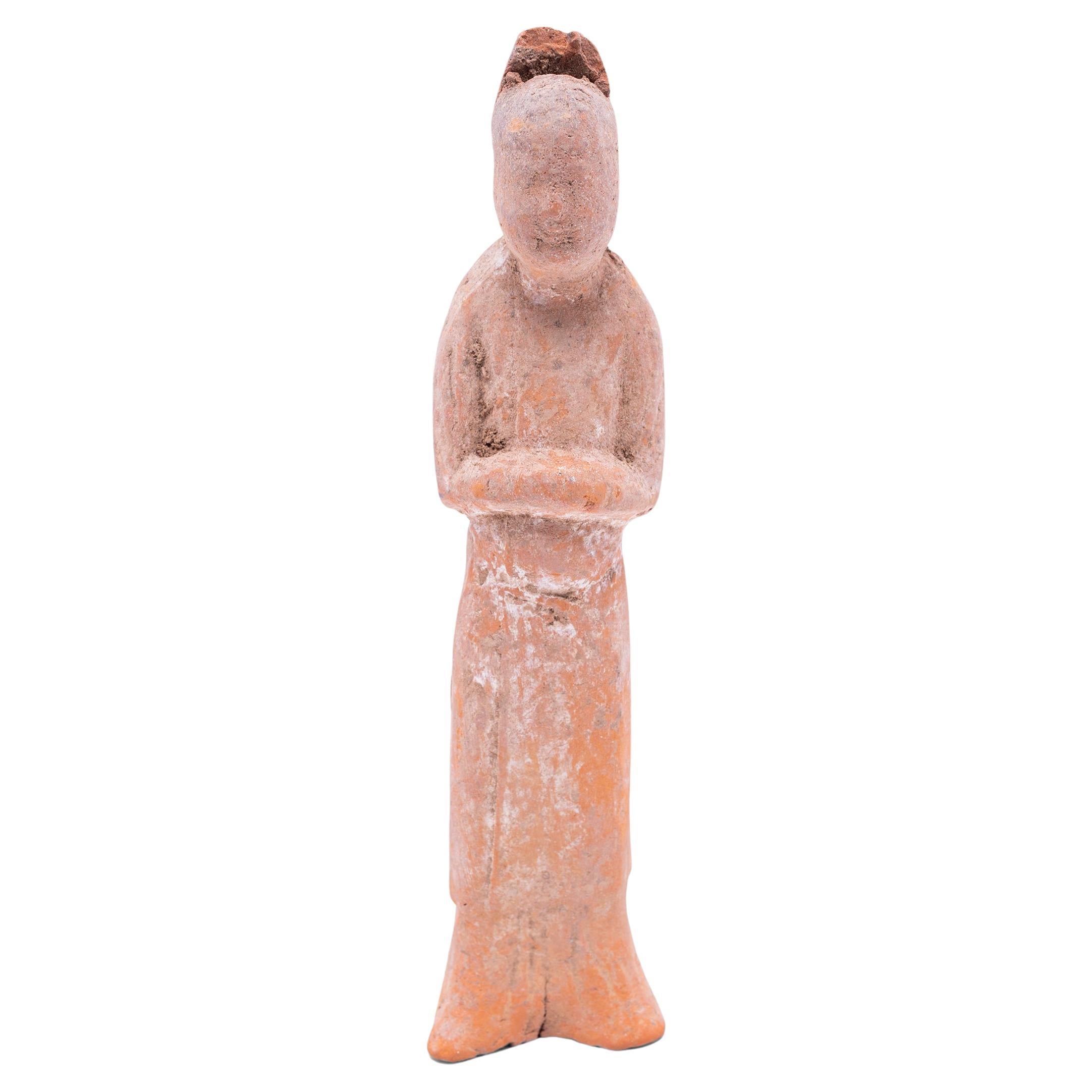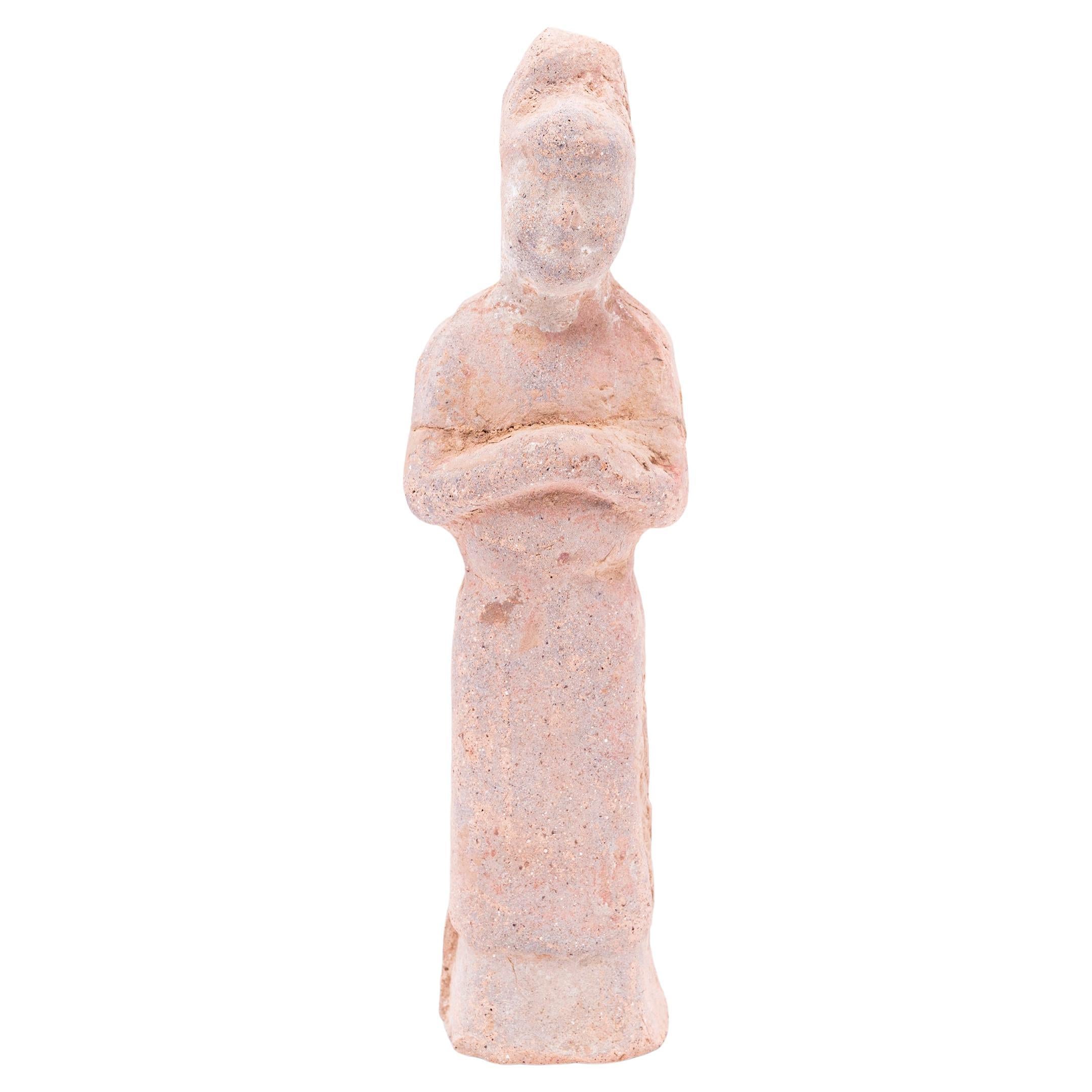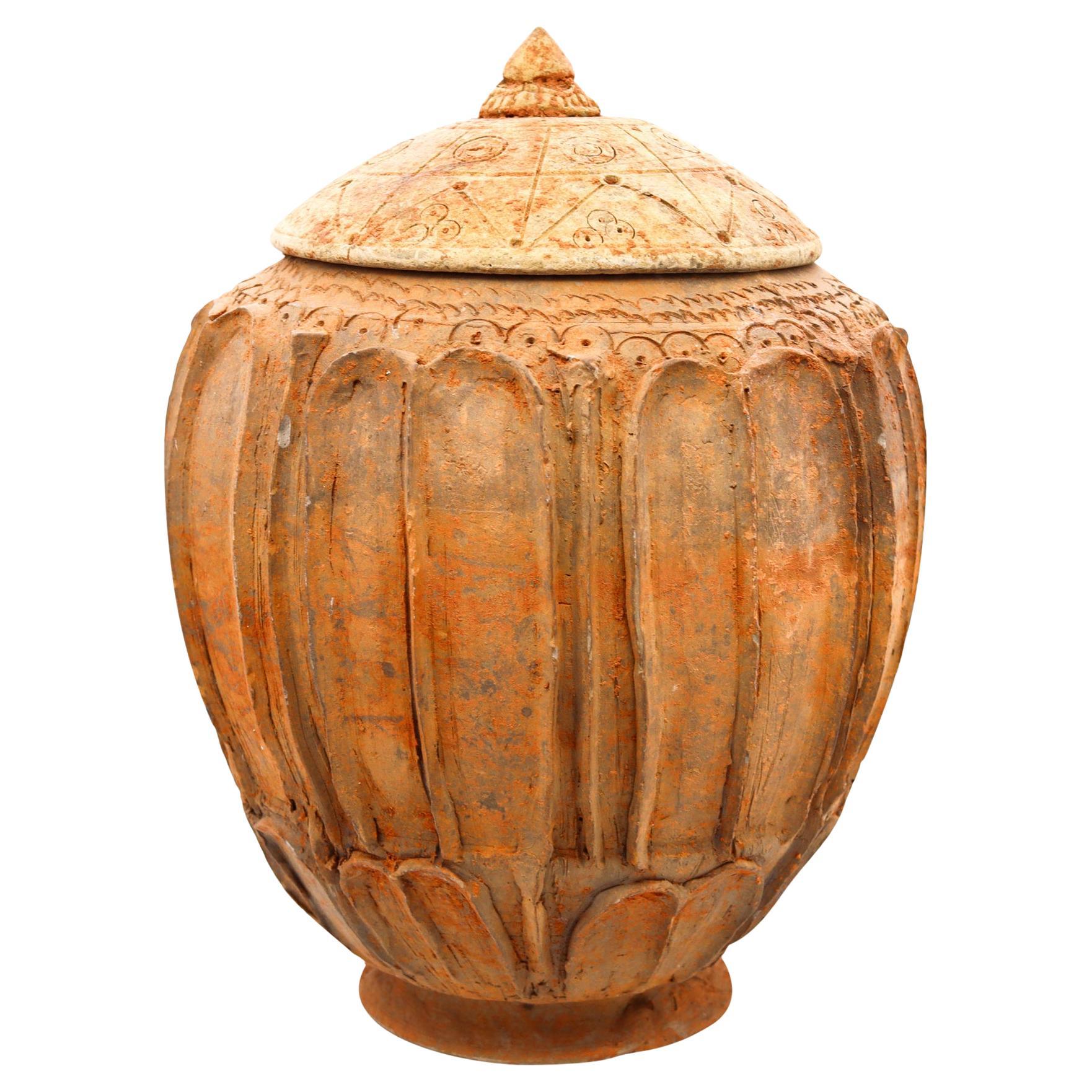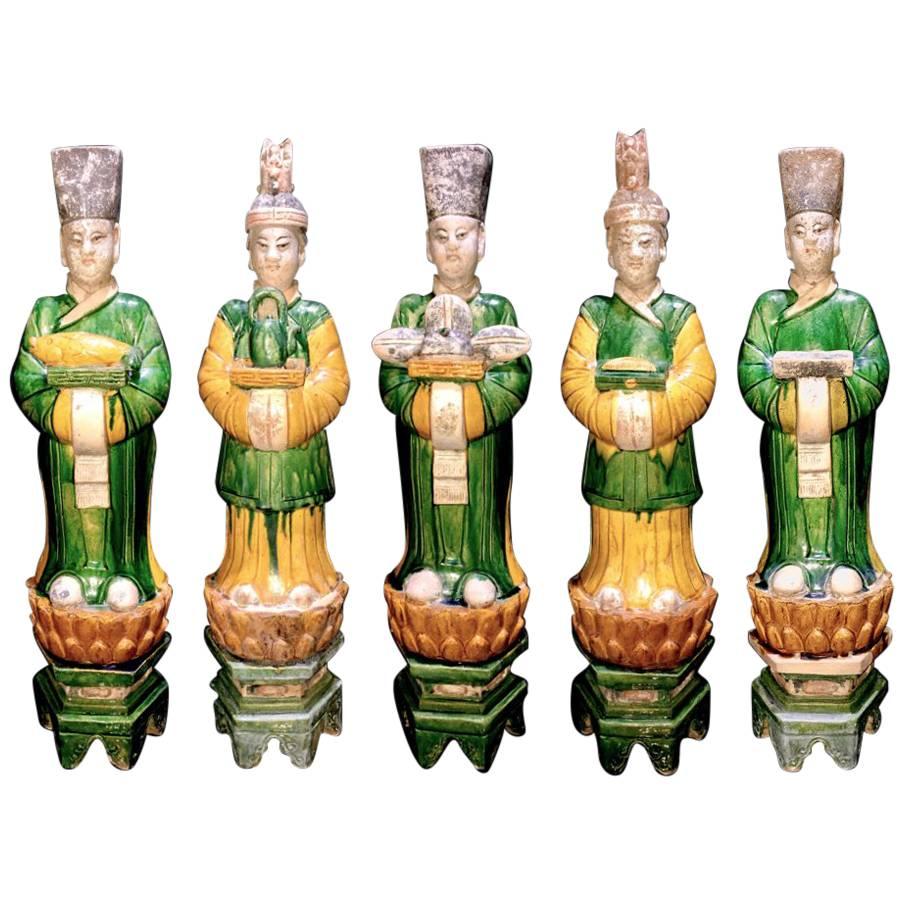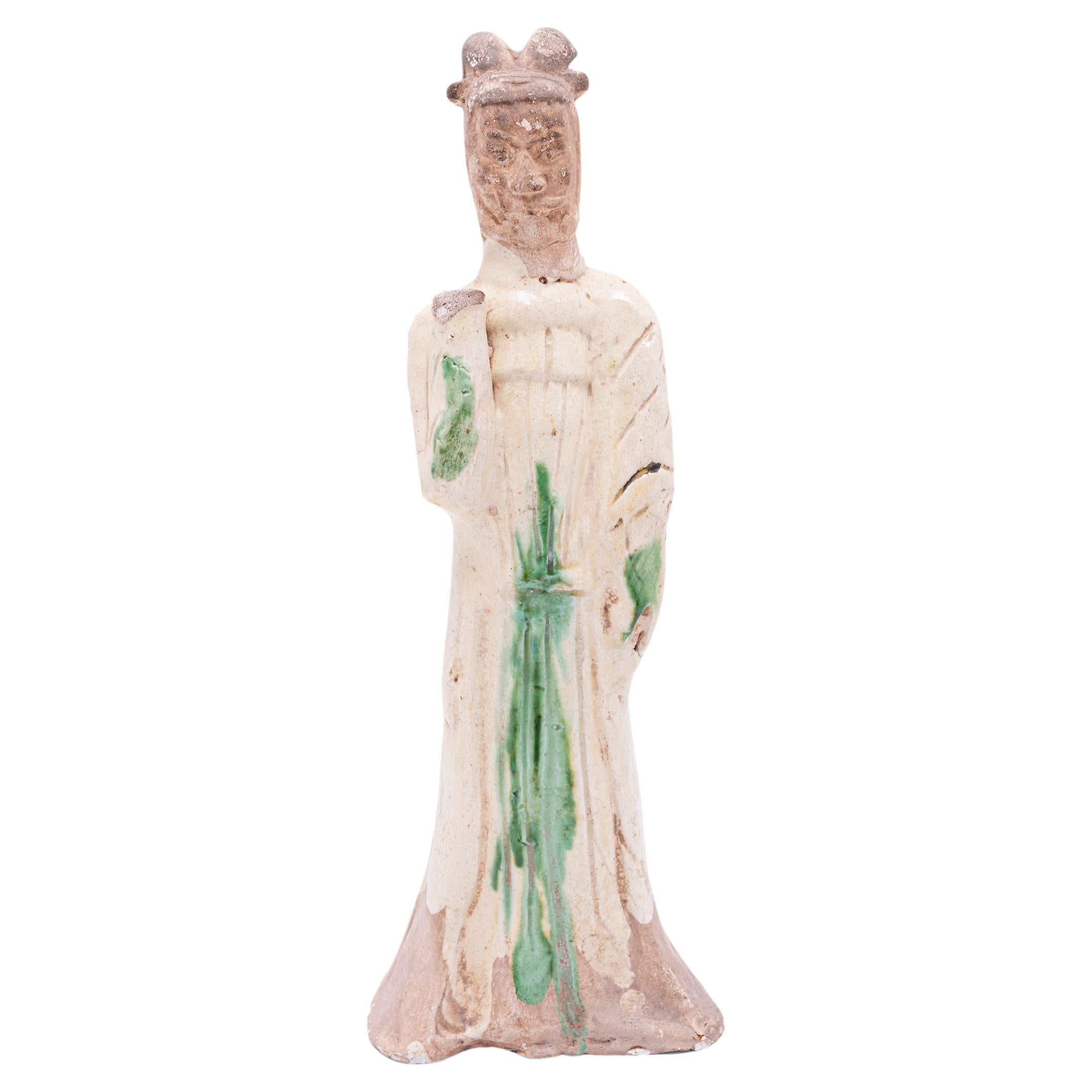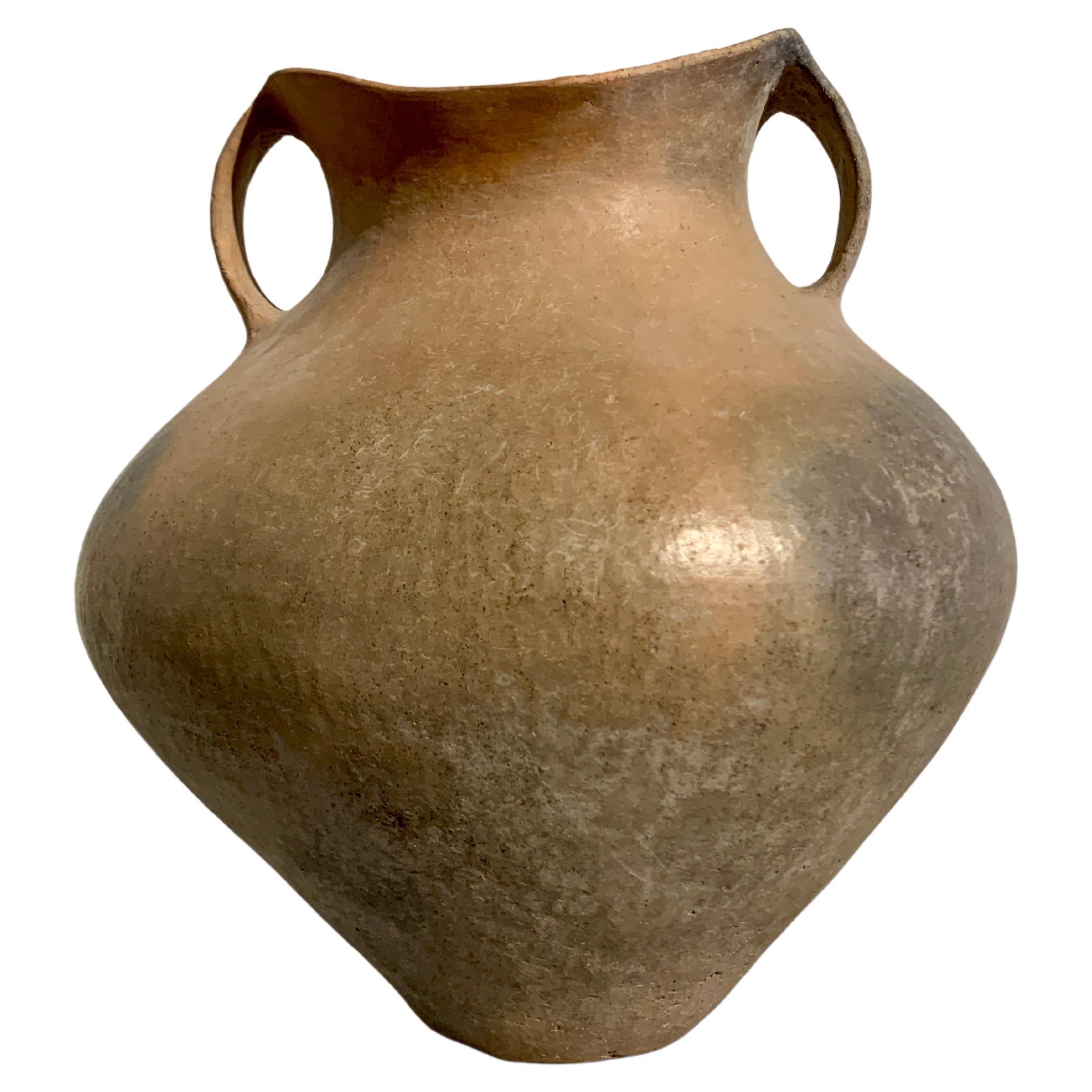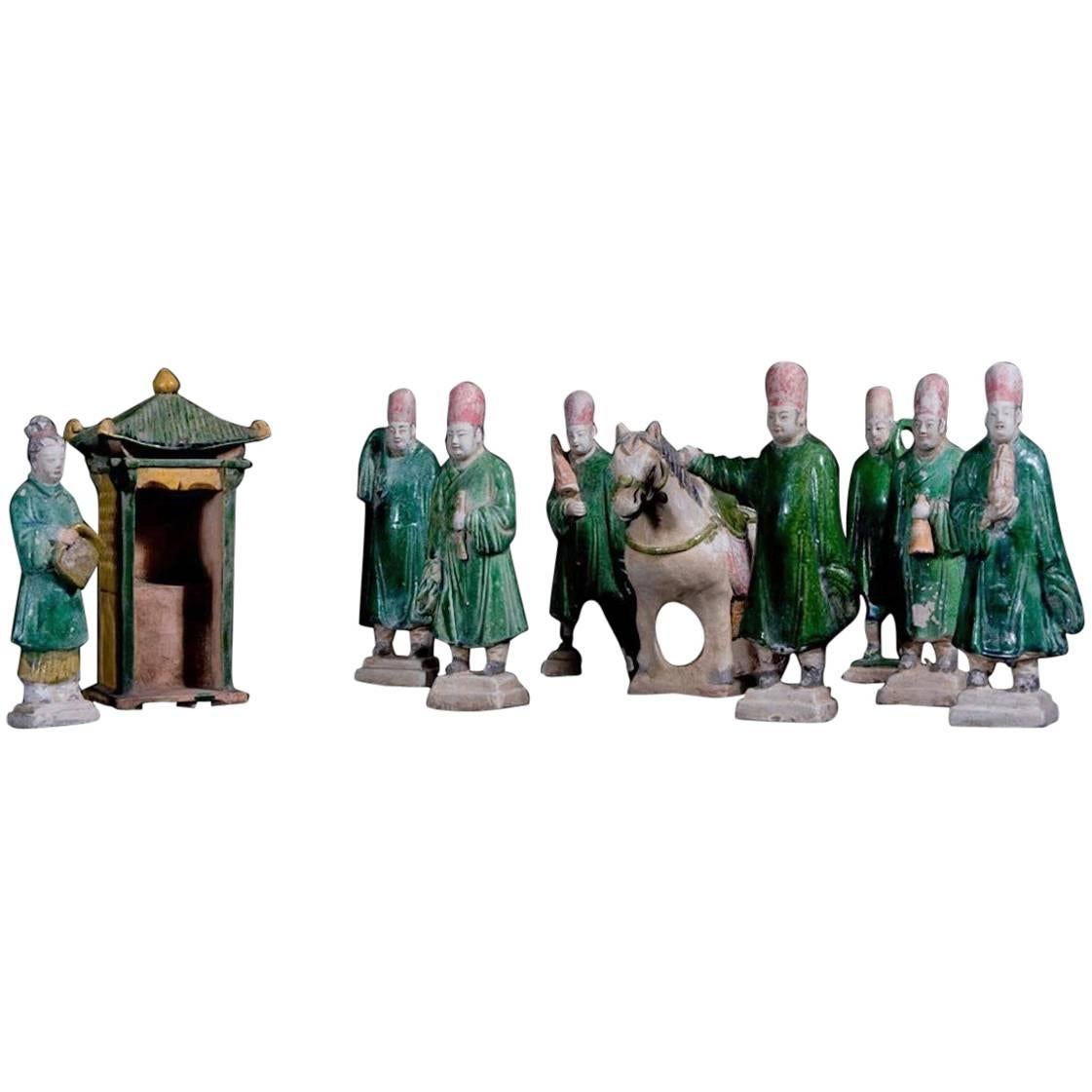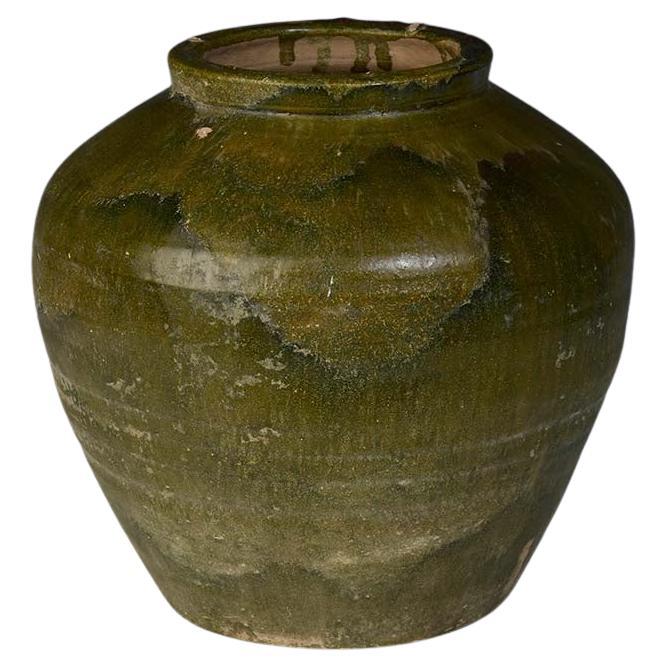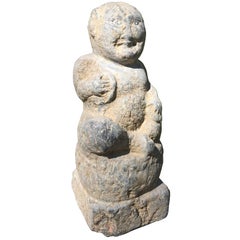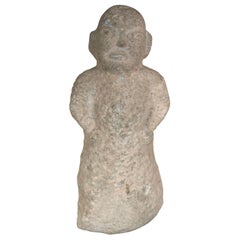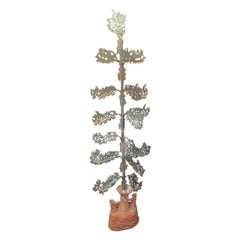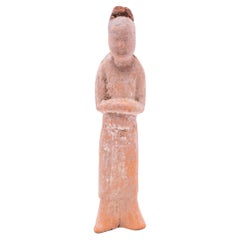
Ancient Chinese Buddhist "Attendant & Zodiac" Offering Jar, 900 AD
View Similar Items
Want more images or videos?
Request additional images or videos from the seller
1 of 11
Ancient Chinese Buddhist "Attendant & Zodiac" Offering Jar, 900 AD
About the Item
- Dimensions:Height: 10 in (25.4 cm)Width: 6 in (15.24 cm)Depth: 6 in (15.24 cm)
- Materials and Techniques:
- Place of Origin:
- Period:
- Date of Manufacture:13th Century
- Condition:Wear consistent with age and use.
- Seller Location:South Burlington, VT
- Reference Number:1stDibs: LU128927167133
About the Seller
5.0
Platinum Seller
These expertly vetted sellers are 1stDibs' most experienced sellers and are rated highest by our customers.
Established in 1990
1stDibs seller since 2015
2,208 sales on 1stDibs
Typical response time: 1 hour
More From This SellerView All
- China Ancient Stone Entertainer, Han Dynasty 200 ADLocated in South Burlington, VTChina an ancient limestone figure of an Entertainer replete with hands holding tambourines and a top a drum, -for the afterlife- , Han dynasty 206 BC...Category
Antique 15th Century and Earlier Chinese Han Sculptures and Carvings
MaterialsLimestone
- Chinese Ancient Stone Male Figure, 206 BC-220 ADLocated in South Burlington, VTChina, a rare hand carved stone male figure from the Han dynasty (206 BCE-220 CE). Dimensions: 16 inches tall on its custom stand and and 6 inches wide Condition: old patina wi...Category
Antique 15th Century and Earlier Chinese Han Sculptures and Carvings
MaterialsTerracotta
- Important Chinese Ancient Bronze Money Tree, 25BC-220ADLocated in South Burlington, VTChina, Ancient Bronze “Money Tree” Yaoqian Shu with original pottery base, Han dynasty (25 BCE – 220 CE) Dimensions: 155cm, 62 inches high A sculpted terracotta pottery base in the form of a tortoise with attendants and inserted with five individual bronze pole segments with twenty four individual hanging bronze open work money “branches” attached in tiers, four per tier and topped with a figure of a bronze phoenix as apex most bearing varying degrees of malachite and azurite encrustation from ancient burial. Important Description Details: Pottery "tortoise" base: 14.5" high and 11" wide Bronze sections: 7pcs pole bronze sections approximately 8" length each 1pc top "phoenix" bronze section approximately 7" high and 6" wide 20 pcs long bronze hanging wings approximately 10" long and 5" wide each 4 pcs short bronze hanging wings (near top) approximately 7" long and 4" wide each Total 32 pcs with ancient green and blue azurite patina. Catalog reference: Schneible Fine arts catalog - 35 Years Collecting Treasures- Number 11p. 28 (see photos) Provenance: Provenance: Private family collection formerly exhibited “Asia Week” New York City, Fuller Building, Zabriskie Gallery, 2008. History of money trees: In the late Han Dynasty tombs...Category
Antique 15th Century and Earlier Chinese Han Antiquities
MaterialsBronze
- Ancient China Monumental Stone Ram Han Dynasty, 206BC-220ADLocated in South Burlington, VTChina, a large votive model of a stone ram, Han dynasty (206BC-220AD) Dimensions: 45cm, 18 inches high and 65cm, 26 inches length and 25cm, 10 inches wi...Category
Antique 15th Century and Earlier Chinese Han Sculptures and Carvings
MaterialsLimestone
- Chinese Ancient Hand Carved UnicornLocated in South Burlington, VTA Chinese hand carved and hand painted wooden effigy of an extraordinary unicorn dating to the Song dynasty before 1279 AD. Please enjoy the beautiful remnants of its aged original swirling painted surfaces. Period: Song dynasty Dimensions: 16 inches high and 31 inches long and 4 inches deep Certificate of Age: Radiocarbon Test, GX-32990, 1223-1279 AD, 02/13/2008 (see photo of certificate) Provenance: This is from a private collection and were acquired by us along with a larger wooden horse...Category
Antique 15th Century and Earlier Chinese Antiquities
MaterialsWood
- Chinese Ancient Hand Carved Wood Lion GuardianLocated in South Burlington, VTA Chinese hand carved and hand painted wooden effigy of a fantastic Bixie dating to before Song dynasty 1279 AD. Please enjoy the beautiful remnants of its aged original swirling painted surfaces. It has been traditionally carved and assembled in three sections. The tail may be a later replacement. Period: Song dynasty Dimensions: 6 inches high and 15 inches wide About Bixie The “bixie” is a mythological creature commonly thought to be able to ward off evil forces with its magical powers. In fact, its name means “to ward off evil” in Chinese. In the Han dynasty, “bixie” were commonly represented as winged, four-legged beasts, a form that was probably transmitted from Western Asia. Provenance: This is from a private collection and were acquired by us along with a larger wooden horse...Category
Antique 15th Century and Earlier Chinese Antiquities
MaterialsWood
You May Also Like
- Chinese Male Mingqi Spirit AttendantLocated in Chicago, ILMolded of earthenware, this petite sculpture is a type of centuries-old burial figurine known as míngqì. Such model figures were placed in tombs of individuals with high status to en...Category
Antique 15th Century and Earlier Chinese Antiquities
MaterialsCeramic
- Chinese Male Mingqi Spirit AttendantLocated in Chicago, ILMolded of earthenware, this petite sculpture is a type of centuries-old burial figurine known as míngqì. Such model figures were placed in tombs of individuals with high status to en...Category
Antique 15th Century and Earlier Chinese Antiquities
MaterialsCeramic
- Chinese Male Mingqi Spirit AttendantLocated in Chicago, ILMolded of earthenware, this petite sculpture is a type of centuries-old burial figurine known as míngqì. Such model figures were placed in tombs of individuals with high status to en...Category
Antique 15th Century and Earlier Chinese Chinese Export Antiquities
MaterialsCeramic
- China 618-907 AD Tang Dynasty Period Pottery Offering Covered Vessel with LotusLocated in Miami, FLOffering vessel from the Chinese Tang Dynasty (618-907 AD). A beautiful "offering spiritual vessel" from the Yunnan province region in the ancient China. This was created in clay earthenware pottery during the Tang Dynasty period between 618 and 907 AD. Featuring molded patterns with incised and high reliefs of geometric figures. The design consists of the bombe baluster-shaped jug and a lid with a spherical knob, which are decorated in relief with 8 panels representing the petals of the lotus flower and linear geometric designs. Has a combined measures including the lid of 10.25 by 7.5 inches (26..03 x 19.05 Cm). Tang dynasty or Tang Empire, was an imperial dynasty of China that ruled from 618 to 907, with an interregnum between 690 and 705. It was preceded by the Sui dynasty and followed by the Five Dynasties and Tend Kingdoms period. Historians generally regard the Tang as a high point in Chinese civilization, and a the golden age of cosmopolitan culture. Tang territory, acquired through the military campaigns of its early rulers, rivaled that of the Han dynasty. The Li family founded the dynasty, seizing power during the decline and collapse of the Sui Empire and inaugurating a period of progress and stability in the first half of the dynasty's rule. The dynasty was formally interrupted during 690–705 when Empress Wu Zetian seized the throne, proclaiming the Wu Zhou dynasty...Category
Antique 15th Century and Earlier Chinese Tang Antiquities
MaterialsClay, Earthenware, Pottery
$2,360 Sale Price / set20% Off - Superb Set of 5 Elegant Court Attendants, Ming Dynasty, 1368-1644 AD TL TestedLocated in San Pedro Garza Garcia, Nuevo LeonA stunning set of 5 graceful terracotta figurines from the Ming Dynasty '1368-1644' AD. These elegant attendants are standing on a yellow glazed lotus flower over a high hexagonal green plinth and wear fine robes in matching green and yellow glazes. The unglazed areas have pigmented colors in red, black and white. Each is carrying essential offerings for the royal family. The head is detachable as often seen on the larger figures from this period. Meticulously detailed facial expressions have been hand-painted. Condition: Mint, finely preserved glaze and pigment, undamaged and no repairs. Provenance: Ex. Danish Collection. This set is guaranteed authentic and comes with a Certificate of Authenticity and TL Test from Laboratory Kotalla in Germany (The Oldest Thermoluminescence Testing Laboratory in the World). Dimensions: Average 54 H cms Burial figurines of graceful dancers, mystical beasts, and everyday objects reveal both how people in early China approached death and how they lived. Since people viewed the afterlife as an extension of worldly life, these figurines, called mingqi, sometimes referred as “spirit utensils” or “vessels of ghosts” disclose details of routine existence and provide insights into belief systems over a thousand-year period. The Ming dynasty was the ruling dynasty of China – then known as the Empire of the Great Ming – for 276 years (1368–1644 AD). Founded by Chu Yuan-chang, the rebel leader that was successful in removing the mongols from the throne. Chinese control was re-asserted in China and eastern Asia. Literature became more important, schools were created, and the justice system was reformed. The Ming dynasty is described by some as "one of the greatest eras of orderly government and social stability in human history,” was the last imperial dynasty in China ruled by ethnic Han Chinese. The practice of burying ceramic objects with the deceased went into decline from the 10th to the 14th Century AD. There was a revival in placing miniature representations of glazed terracotta objects such a furniture, food offerings, horses, miniature statues...Category
Antique 15th Century and Earlier Chinese Ming Antiquities
MaterialsTerracotta
- Set of Five Chinese Sancai Female Attendant FiguresLocated in Chicago, ILMolded of earthenware, this set of five petite sculptures are a type of centuries-old burial figurine known as míngqì. Such model figures were placed in tombs of individuals with hig...Category
Antique 15th Century and Earlier Chinese Antiquities
MaterialsCeramic
Recently Viewed
View AllMore Ways To Browse
Chinese Water Jar Antique
Large Antique Ship Lantern
Rare Antique Ship Lantern
Yuan Jar
Asian Lotus Pottery
Dragon Head Water Spout
Antique Carved Chinese Paint Brushes
Other Items
Art Deco Piece
Metal Office Table
Italian Cocktail
Two Plates
Iconic Designers
Office Console Table
Glasses Display
Wood And Glass Dining
Weave Pattern
Leaves Lighting
